
Our production activity centre on those types of fabrics that manifest effects with no equals in industrial production, such as brocades and figured, ciselé and polychrome velvets.
The first stage in the lengthy process of production of a hand-woven velvet or brocade is preparation of the hand-operated loom.
A total of eleven steps are required: from dyeing of the silk – carried out only and exclusively in Italy – to creation of the Jacquard cards, to threading the loom for the ground warp (preparation of the spools, creation of the warp and rolling on the back beam) to preparation of the bobbins for the pile warp (according to loom type, from 800 to about 3600 bobbins).
The knotting of the warps – for both the ground and the pile – is carried out entirely by hand, thread by thread.
The entire process requires extreme precision and concentration on the part of the weaver; by tradition, besides being the final creator of the velvet or brocade, he is also the person who prepares the loom
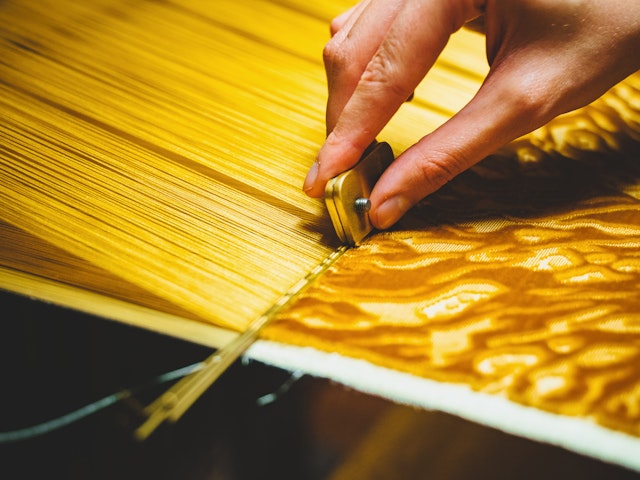
How Velvet is Woven
Velvet is characterised by a piled surface formed by a ‘pile warp’: every thread of the pile is mounted on a small bobbin inserted in a structure – the ‘creel’ or rack – located behind the loom.
The weaving process consists of first weaving the ground (usually, with 3 or 4 passes of the ground weft which intertwines with the ground warp), after which the pile warp threads are lifted as dictated by the plot punched in a series of cards which are read one after the other by the Jacquard machine.
For every card, the indicated pile threads are lifted; under these, the weaver inserts a rod (which may be either circular in section or with a groove on the upper side). The round rod is used to create a velvet made up of innumerable tiny loops, while the grooved rod is used to form small tufts obtained by cutting the pile warp threads by hand with a small blade which the weaver runs down the groove in the rod.
Weaving velvet by hand calls for meticulous attention and great skill by the weaver; on the average, a velvet weaver can produce 20-25 centimetres of fabric per day.
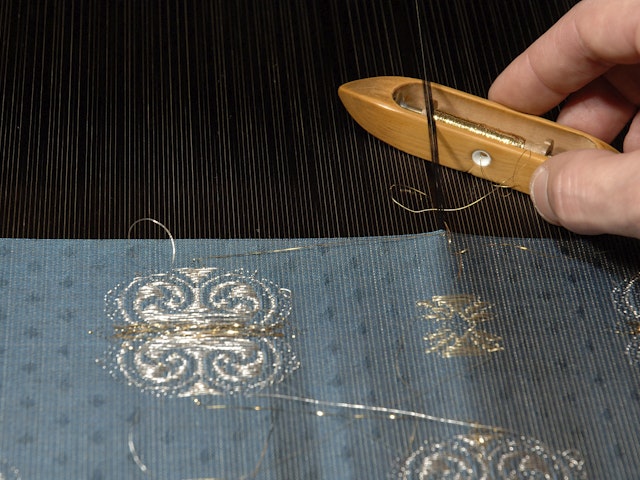
How Brocade is Woven
In the case of fabrics with brocaded weaves, each weft colour is passed singly on a small brocade shuttle that is inserted manually every time the ground warp threads are lifted.
The more colours and yarn types that combine to determine the motif, the slower and more delicate is the work of the weaver, who must be highly specialised in this technique, and the attention he or she must pay to the technical drawing – the messa in carta – which details the various weft insertions.
The richer the palette of colours used, the slower the work. The production rate is about 7 to 10 cm per working day.
We weave our fabrics only on late 19th-century hand-operated Jacquard looms.
The weaver’s hand is fundamental to fabric creation: punctilious attention to design, selection of the precious yarns and precise workmanship are the elements that set our manufactory apart and make all our products exclusive examples of artisan excellence.
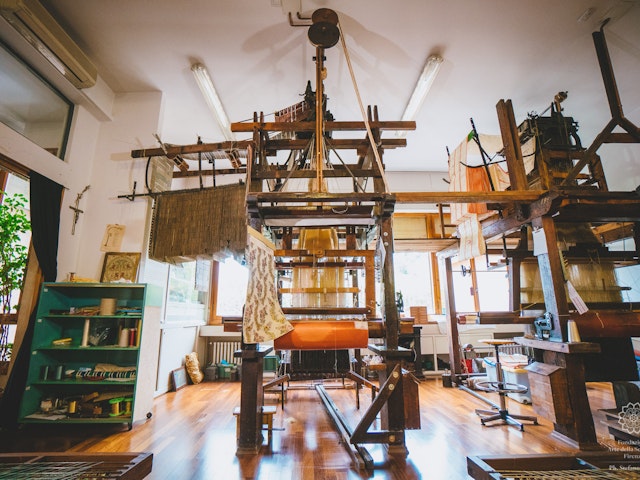
Our ancient hand-operated looms
At our manufactory, specialised weavers work on five velvet looms, four brocade looms and one loom for gold and silver coarse-woven teletta fabrics.
Thanks to its wealth of knowledge of hand weaving and its practical experience in the art, Fondazione Lisio is a specialist in experimentation with traditional techniques used to embellish and create exclusive products for contemporary goods sectors.
Use in manufactory practice of hand-operated looms offers to those who design and create new fabrics, with new designs, effects and weaves, the opportunity to concretely verify, modify and check, during each stage of production of a sample, the infinite range of possibilities allowed by use of different materials, colours and weaves.
The exclusive quality that characterises the Fondazione Lisio fabrics comes from our research, taken to the nth degree, into the aesthetic and technical qualities that go into producing a final product of indisputable beauty.
Beauty that derives from extreme attention to choice of materials and weaving techniques; beauty that derives from care in creation of the design, in preparation of the loom and in the weaving itself, which is carried on at the slow rhythms beaten by the ancient hand-operated looms.
To describe how many-sided and complicated production of precious hand-woven fabrics is means to transmit to a public much more vast than the close-knit circle of experts in the field, an awareness of a heritage of creation and production skills made of equal parts of conception and design expertise and practical knowhow, by providing that public with the tools for truly appreciating and recognising just what lies behind a glorious artistic craft and behind the finished products produced by its practitioners.
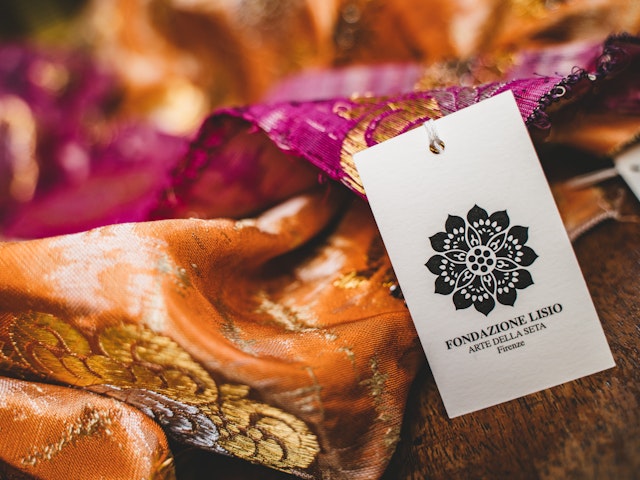
Lisio Fine Fabrics
Our Manufacture continues to draw from the historical archive, proposing new color and structure experiments, creating each time absolutely unique and contemporary fabrics.
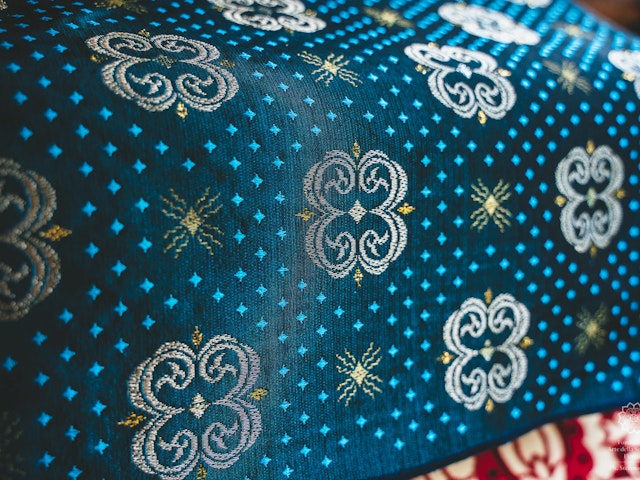
Our Exclusive Distributors
Our fine fabrics are available abroad at "Turnell & Gigon", our exclusive distributor for United Kindom, and "Marcello Boss" our agent in United States.

